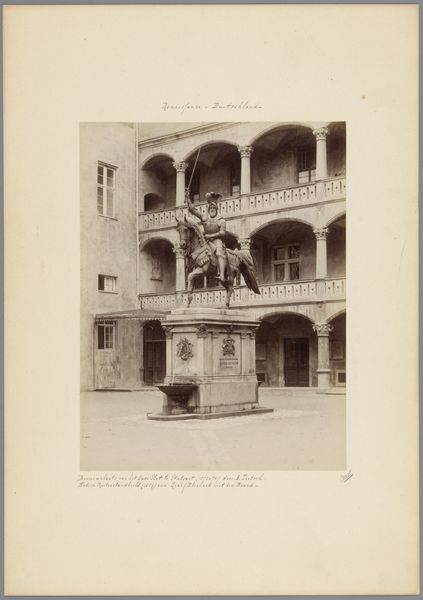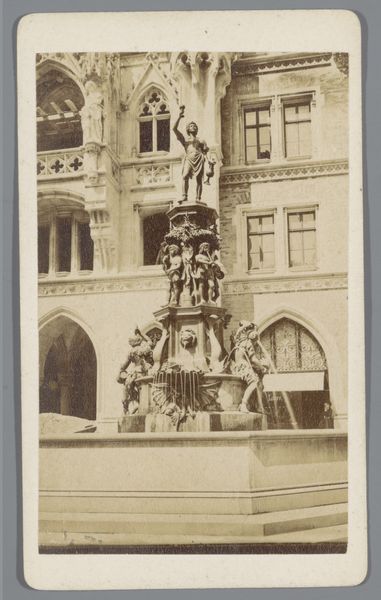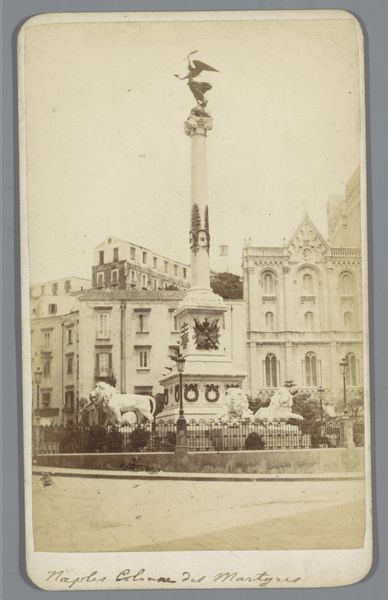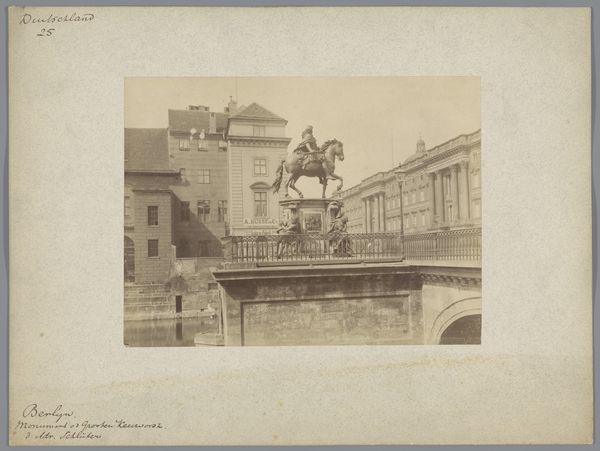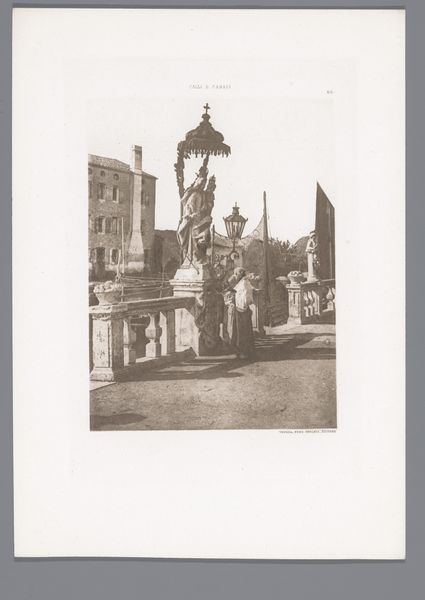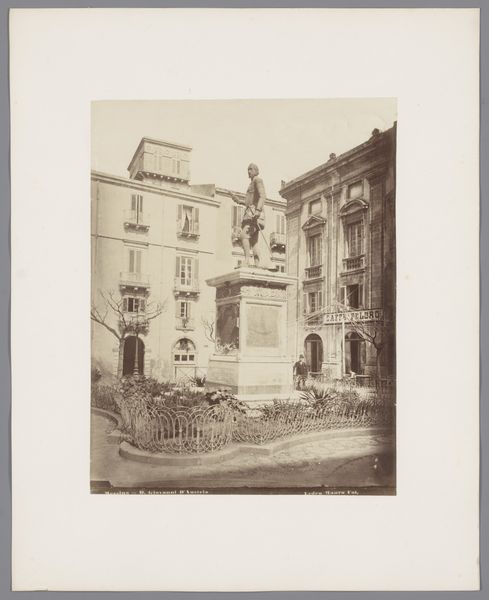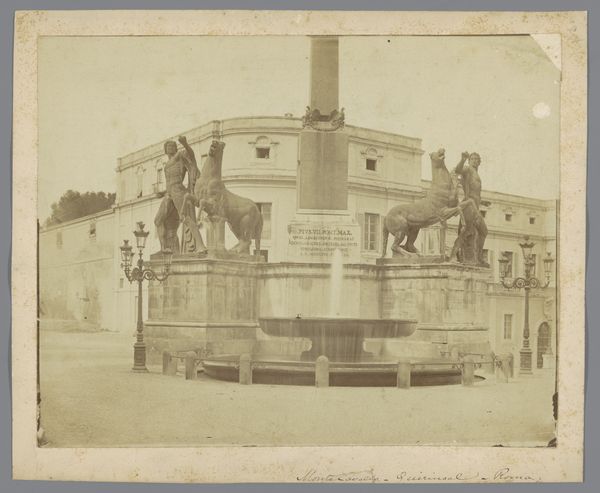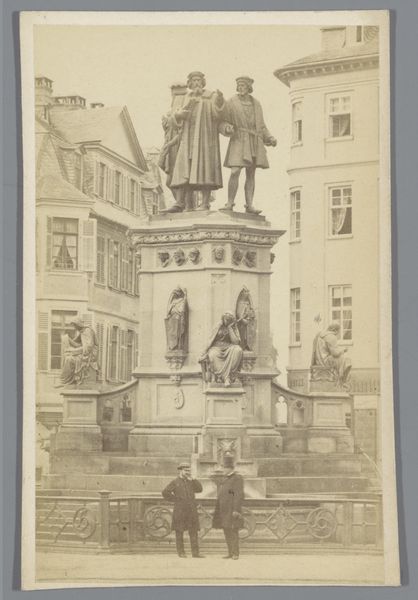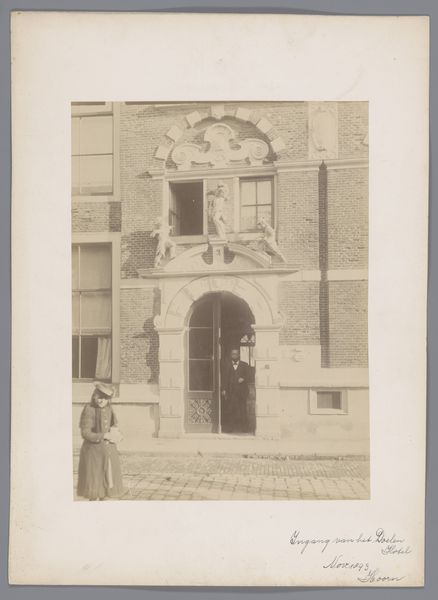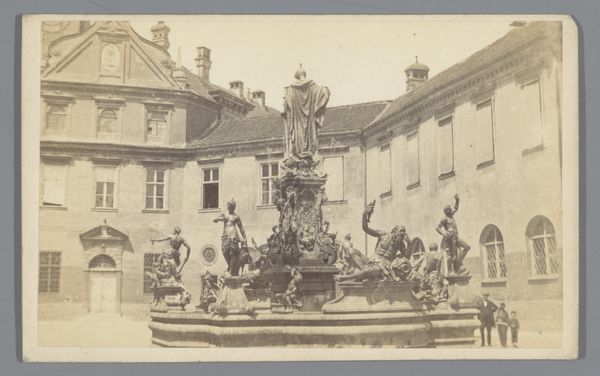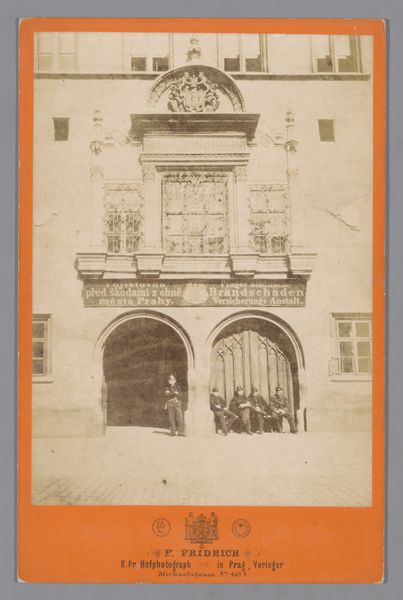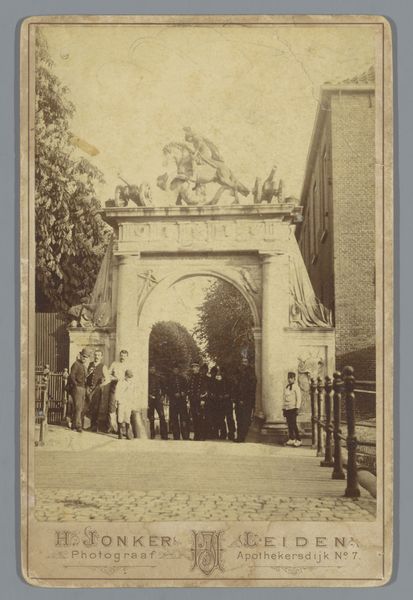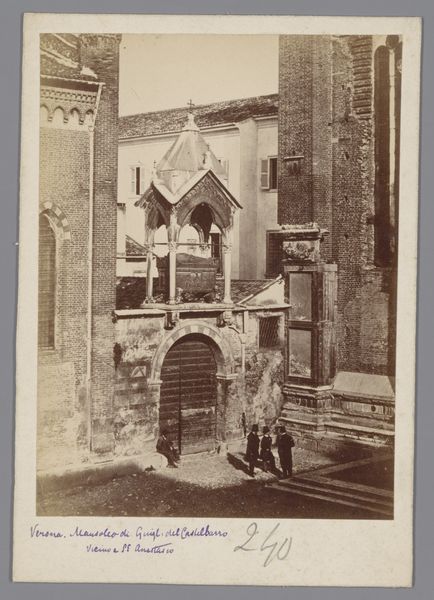
Ruiterstandbeeld van hertog Everhard I van Württemberg naar Ludwig Hofer op de binnenplaats van het Altes Schloss in Stuttgart, Duitsland 1859 - 1885
0:00
0:00
Dimensions: height 102 mm, width 62 mm
Copyright: Rijks Museum: Open Domain
Here's an anonymous photograph of Ludwig Hofer's equestrian statue of Duke Eberhard I of Württemberg, situated in the Altes Schloss in Stuttgart. Equestrian statues like this one have a long history as symbols of power, but their meaning shifts depending on the social context. This statue of Eberhard, brandishing his sword, evokes military strength and leadership. It was created in a period of nation-building and rising nationalism. The statue can be seen as part of a broader trend in the 19th century: monuments were erected to promote particular versions of national identity and collective memory, reinforcing social hierarchies and political ideologies. In Germany, the figure of the heroic leader on horseback was particularly potent. Understanding this image requires considering the statue’s location, Stuttgart’s Altes Schloss, which was redesigned to project power. To fully appreciate this artwork, we need to research the history of Stuttgart, and the political and cultural context of 19th-century Germany. This will enable us to interpret how the statue participates in the creation and reinforcement of social meaning.
Comments
No comments
Be the first to comment and join the conversation on the ultimate creative platform.
